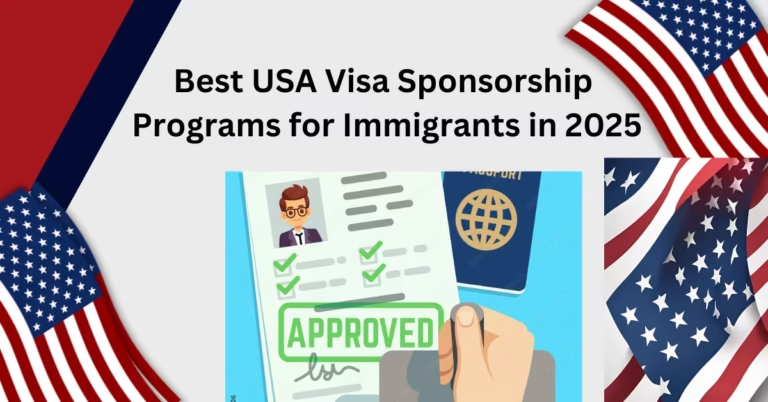Top Public vs Private High Schools in the US: Which Is Better for Your Child?
When deciding where to send your child to high school, one major question arises: public vs private high schools in the US which is better? This decision can shape your child’s academic journey, social development, and future college opportunities.
Both school types have unique strengths and potential drawbacks, depending on your family’s goals, budget, and values.
In this comprehensive guide, we explore the key differences, benefits, and considerations of public and private high schools. We aim to help you make a confident, well-informed decision.
Understanding Public and Private High Schools in the US
What Is a Public High School?
Public high schools are funded by local, state, and federal governments. They are free to attend and typically serve students based on their home address. They must follow state-mandated curricula and standardised testing guidelines.
Key features:
- Funded by taxpayers
- Managed by school districts
- Open to all students in the area
- Governed by state education standards
What Is a Private High School?
Private high schools are independently funded through tuition, donations, and endowments. They are not bound by government curriculum requirements, which gives them more flexibility in educational philosophy and instruction methods.
Key features:
- Funded by tuition and private contributions
- Often affiliated with religious or independent organisations
- Admissions based on application, testing, and interviews
- More autonomy over curriculum and policies
Public vs Private High Schools in the US: Key Differences
1. Curriculum and Academic Rigour
Private schools often offer specialised curricula, such as college preparatory, International Baccalaureate (IB), or STEM-focused programs. However, many public schools, especially magnet and charter schools, also offer rigorous academic tracks and Advanced Placement (AP) options.
🔗 Explore elite STEM-focused schools in our Top 10 High Schools in the US for STEM Programs.
2. Class Size and Student-Teacher Ratio
- Private Schools: Tend to have smaller class sizes (average 12–15 students), allowing for more personalised instruction.
- Public Schools: Often have larger classes (average 20–30 students), depending on funding and district policies.
3. Cost and Affordability
- Public Schools: Free for all residents.
- Private Schools: Tuition varies significantly, anywhere from $5,000 to $60,000+ annually. Scholarships and financial aid are often available.
4. Extracurricular Activities and Facilities
While private schools may have more niche extracurricular offerings (e.g., fencing, sailing, robotics), many public high schools boast strong athletic and music programs funded by the district.
5. College Admissions and Outcomes
Private high schools often have dedicated college counsellors and boast high college matriculation rates. However, many high-performing public schools, especially magnet and STEM-focused ones, send students to top universities like MIT, Harvard, and Stanford.
Pros and Cons: Public vs Private High Schools
Pros of Public High Schools
- Free education
- Diverse student population
- Offers community and neighbourhood connection
- Advanced Placement (AP) and dual-enrollment programs are available
❌ Cons of Public High Schools
- Larger class sizes
- Variable academic quality by district
- Budget constraints can limit resources
✅ Pros of Private High Schools
- Smaller classes and more personalised attention
- Greater curricular flexibility
- Stronger discipline policies and student support
- Often have high college acceptance rates
❌ Cons of Private High Schools
- Expensive tuition
- Less socio-economic diversity
- Religious or philosophical curriculum may not suit everyone
Which Is Better for Your Child’s Learning Style?
Some students thrive in structured, competitive environments, often found in private institutions. Others benefit from the diversity and real-world experiences of public schools.
Ask yourself:
- Does your child need close academic guidance?
- Is your child academically gifted or in need of special education services?
- Are you seeking alignment with religious or cultural values?
- How important is social diversity in your child’s growth?
Public vs Private: Performance and Rankings
According to data from the National Centre for Education Statistics (NCES) and U.S. News, students at private high schools often outperform their public school counterparts in SAT scores and college admissions. However, public school students have access to gifted programs, dual enrollment, and magnet schools that also deliver exceptional outcomes.
📎 Reference: U.S. News Education
Parent and Student Testimonials
“We chose a public STEM magnet school, and our daughter got into MIT. The resources were excellent, and we didn’t pay a dime.”
— Sarah D., parent from California
“My son attends a private school with a 6:1 student-teacher ratio. The personal attention he gets is unmatched.”
— Michael T., parent from New York
Hybrid Options: Charter and Magnet Schools
Public charter and magnet schools blend public funding with specialized programs. They can be a great middle-ground, offering advanced academics without the private school price tag.
- Charter Schools: Publicly funded but independently run
- Magnet Schools: Specialised public schools focused on themes like STEM, arts, or global studies
How to Make the Right Choice
1. Define Your Priorities
Consider what’s most important: affordability, academics, diversity, religion, or extracurriculars.
2. Visit Schools
Tour campuses, speak with faculty, and observe classes.
3. Check Accreditation and Reputation
Make sure the school is accredited and research parent reviews.
4. Explore Financial Options
If leaning toward private education, explore scholarships, aid, and payment plans.
5. Talk to Other Parents
Community forums and parent groups are gold mines for honest feedback.
FAQs About Public vs Private High Schools in the US
Q: Do private schools offer a better education?
A: Not always. While many private schools offer elite programs, numerous public schools, especially magnet and STEM academies, are just as competitive.
Q: Are public schools bad?
A: Not many public schools are high-performing, with excellent teachers and advanced courses.
Q: What about college acceptance?
A: Private schools may offer more tailored college counselling, but top colleges accept students from all types of schools.
Q: Can I get financial aid for private schools?
A: Yes. Most private schools offer scholarships and financial aid based on need or merit.
Q: Is homeschooling better than public or private school?
A: It depends on the student. Homeschooling offers flexibility but may lack the social and extracurricular opportunities of traditional schools.
Final Thoughts
Choosing between public vs private high schools in the US is a deeply personal decision. There’s no universally “better” optiononly what’s best for your child’s needs and your family’s values. The good news is that the US offers a variety of high-quality educational paths.
Whether you choose a well-resourced public magnet school or a prestigious private academy, focus on the environment that will best help your child thrive.






